在良渚古城遗址圆梦之后,我们可以将目光移向下一个目标,看看谁能续写入选《世界遗产名录》的这份荣光。
浙江的“种子选手”当然是有的,而且是必须要有。
浙江省文物局文物保护与考古处处长李新芳介绍说,在《实施〈世界遗产公约〉操作指南》(以下简称《操作指南》)中,有非常清晰明确的关于《预备名录》的条目:
《预备名录》是缔约国认为其境内符合申报世界遗产条件的遗产的详细目录,缔约国应在《预备名录》中列出该国未来几年内要申报的, 认为具有潜在的突出的普遍价值的文化和/或自然遗产的详细信息。如果缔约国提交申报的遗产未曾列入该国的《预备名录》,委员会将不予考虑。
进入《预备名录》是申报世界遗产的先决条件,而《预备名录》至少每10年修订一次。
在联合国教科文组织的网站上,中国的《预备名录》最近一次的更新时间是2019年1月30日,项目数量总计62个。其中,与浙江有关的项目有:海宁海塘·潮文化景观、青瓷窑遗址、海上丝绸之路、中国明清城墙、江南水乡古镇以及闽浙木拱廊桥。其中,海上丝绸之路、中国明清城墙、江南水乡古镇和闽浙木拱廊桥均为多地联合申报项目。
不过,除了这份《预备名录》外,2006年,国家文物局还设了一份动态性的《中国世界文化遗产预备名单》,按照世界遗产申报的要求,尽量吸纳遗产价值突出、保护管理状况良好的遗产项目,以充分发挥预备名单作为世界遗产申报项目储备的重要作用。
“谁会成为下一处世界遗产,并不是一道简单的选择题。”李新芳说,“我们需要更加理性的判断。”在她看来,成为世界遗产需要满足两个必备条件,一是遗产价值,对于全人类而言具有“突出的普遍价值”,另一个就是遗产的保护管理工作达到较高的水准。
海宁海塘·潮文化景观
所在省份:浙江省
海宁海塘·潮文化景观位于浙江省海宁市南的钱塘江河段、滨河地带,分布范围11052.3公顷,由海宁段海塘纵深防御体系(总长约32公里)及海塘管理机构、潮及潮文化史迹、乾隆南巡史迹五部分价值载体、15处遗产要素构成。
遗产核心是自唐代起修葺至今并仍捍卫着钱塘江北岸的海宁海塘体系和人类与之博弈千年之久却又无法不叹服于其自然伟力的钱塘江潮。
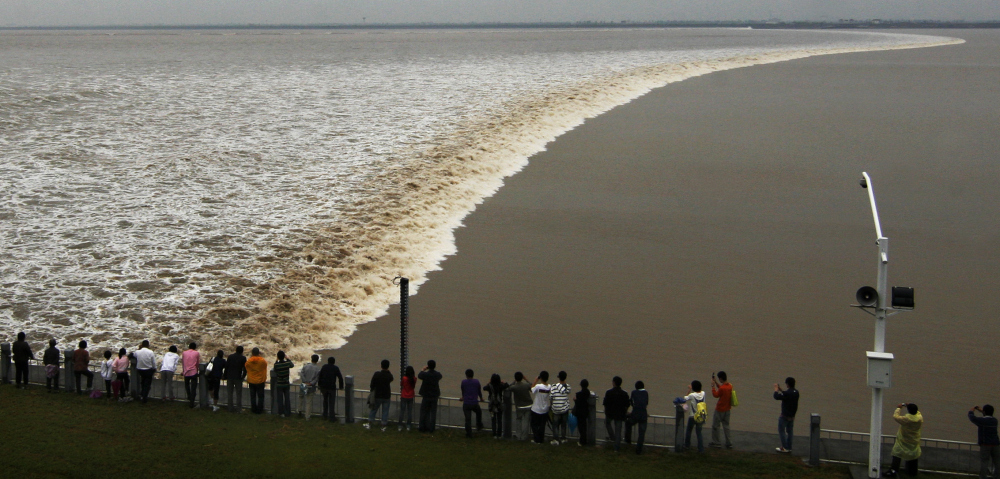
海塘纵深防御体系是人类与海“争地”的直接见证;钱塘江潮是文化景观形成的缘起和动因,并因之产生了观潮、祭潮、镇潮等民俗以及与钱塘江潮相关的诗词书画等。
潮文化史迹综合体现了海宁地区因海潮而产生的独特民俗信仰,包括对潮神的崇拜祭祀、通过巫术镇潮、观潮等。
这些景观要素从不同方面共同支撑了海宁海塘·潮文化景观的整体价值,价值载体构成完整,保存真实,能够体现文化景观的代表性价值。尤其是在钱塘江现存海塘中,海宁海塘纵深防御体系遗产要素最为完整,保存长度最长,是古海塘持续利用至今的典范。
青瓷窑遗址
所在省份:浙江省
浙江青瓷是中国古代制瓷手工业的杰出范例,是制瓷业的发源地之一,其悠久的烧造历史、庞大的遗存规模为中国发明并传承至今的制瓷传统提供了独特的见证。
根据青瓷生产工艺和制作过程,青瓷窑遗址其遗产要素主要包括窑业遗存和相关历史环境。窑业遗存指青瓷制造工场的人工设施遗迹,主要包括作坊区遗迹、窑炉区遗迹、废瓷堆积、窑具遗物等;与青瓷制造相关联的历史环境要素包括瓷土资源区、薪柴资源分布区、窑炉分布坡地、作坊用水水源、交通水道等。
浙江青瓷以上林湖越窑和大窑龙泉窑青瓷为代表。
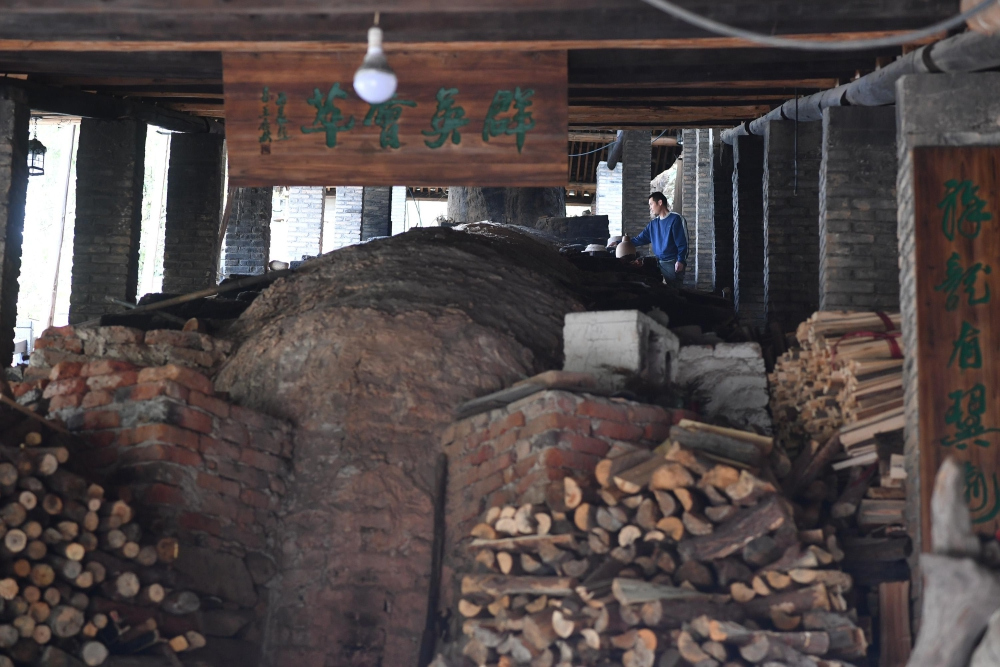
上林湖越窑代表了唐、五代时期(公元8~10世纪)中国青瓷制造的最高水平。上林湖越窑生产的青瓷,不仅是我国陶瓷史上最具特色、最有影响、烧造经历时间最长的瓷种,亦曾在9~11世纪对埃及与波斯地区、朝鲜半岛的陶瓷制作产生过显著影响。
大窑龙泉窑烧制青瓷开始于五代,北宋时期瓷业已相当繁荣,南宋至明代中期为鼎盛时期,“沿河十里,瓷窑林立,烟火相望”,成为全国最大的制瓷中心,当年有“瓷都”之称。体现了公元10~13世纪中国青瓷的主流技术和独特的艺术成就。
龙泉青瓷也是我国陶瓷史上传播最为广泛、最有影响、经历时间最长的瓷种,对我国南方众多地区以及东南亚、北非的陶瓷制作产生过显著影响。
闽浙木拱廊桥
所在省份:浙江省、福建省
闽浙木拱廊桥在中国闽东北、浙南山区留存着百余座,其具体分布范围大致在浙江瓯江水系以南、福建闽江水系以北的区域内,涉及浙江、福建两省的温州、丽水、宁德、南平、福州五市、十八个县。
获预备资格的是浙江、福建两省七县的22座木拱廊桥:泰顺县的溪东桥、北涧桥、三条桥、文兴桥;景宁县的东坑下桥、接龙桥、大赤坑桥;庆元县的如龙桥、咏归桥、半路亭桥;寿宁县的鸾峰桥、大宝桥、杨梅州桥;周宁县的三仙桥;屏南县的广利桥、广福桥、千乘桥、龙津桥、万安桥;政和县的赤溪桥、后山桥、洋后桥。
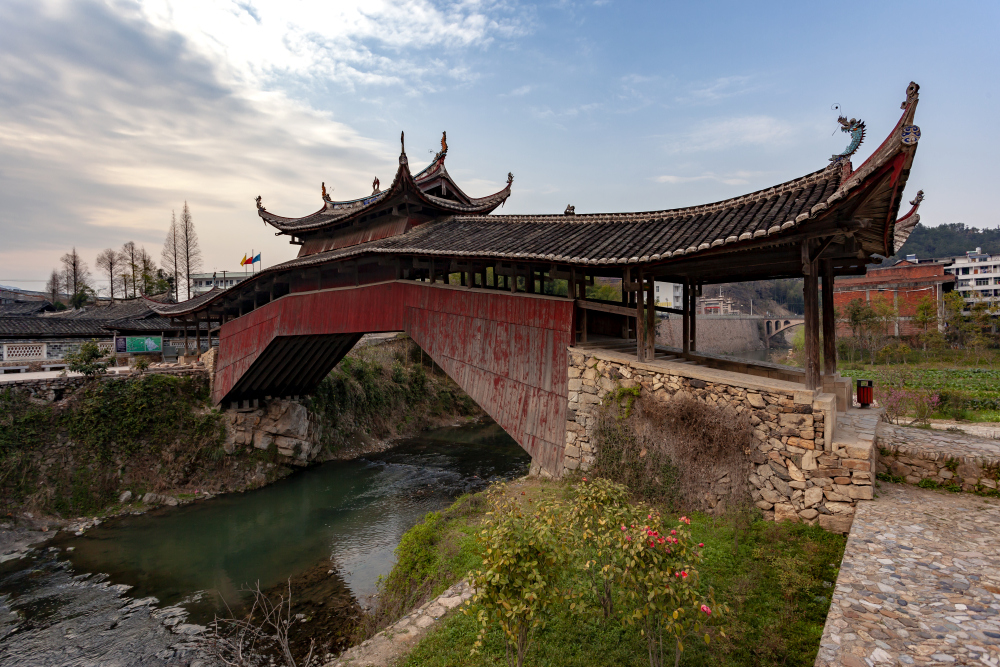
闽浙木拱廊桥以独特的桥梁结构形式,解决了木结构大尺度无柱跨越的问题,成为木结构桥梁中最具创造性和技术性的桥梁形式,是中国历史上木拱桥营造方面先进技术的杰出代表,从实物的角度完善了中国木拱桥的构成体系。
闽浙木拱廊桥蕴含着丰富的精神内涵和乡土文化,是山地人居文化的典型范例。闽浙两省交界处是山高林密、溪壑纵横的山区,溪流湍急、多险滩峡谷。古代工匠在有限的经济和技术条件下,利用简单的材料、工具,创造出的桥梁解决了大跨度、深溪涧、防山洪冲毁、施工等一系列困难,体现了人类对自然环境的深刻认识、对自然资源的合理利用。
木拱廊桥还是闽浙山区村落中极其重要的公共建筑,它融入了山地人居的多方面功能以及乡土文化,如传统地理风水功能、信仰空间功能以及聚会集市功能等。由木拱廊桥所形成的文化空间,对增进民众情感交流和文化认同具有重要作用,是对木拱廊桥文化遗产价值的延伸和升华。
中国明清城墙
所在省份:江苏省、陕西省、湖北省、浙江省、辽宁省、安徽省
由南京、西安、荆州、襄阳、临海、兴城、寿县、凤阳8座城墙遗产联合申报的“中国明清城墙”,分布在中国的南方与北方,它们分别代表了明清时期的都城、二级王城、府城或州城和卫所等城市体制,是一种带有强烈的中国古典城市形态特点且具有内在逻辑架构关系的城市遗产体系。
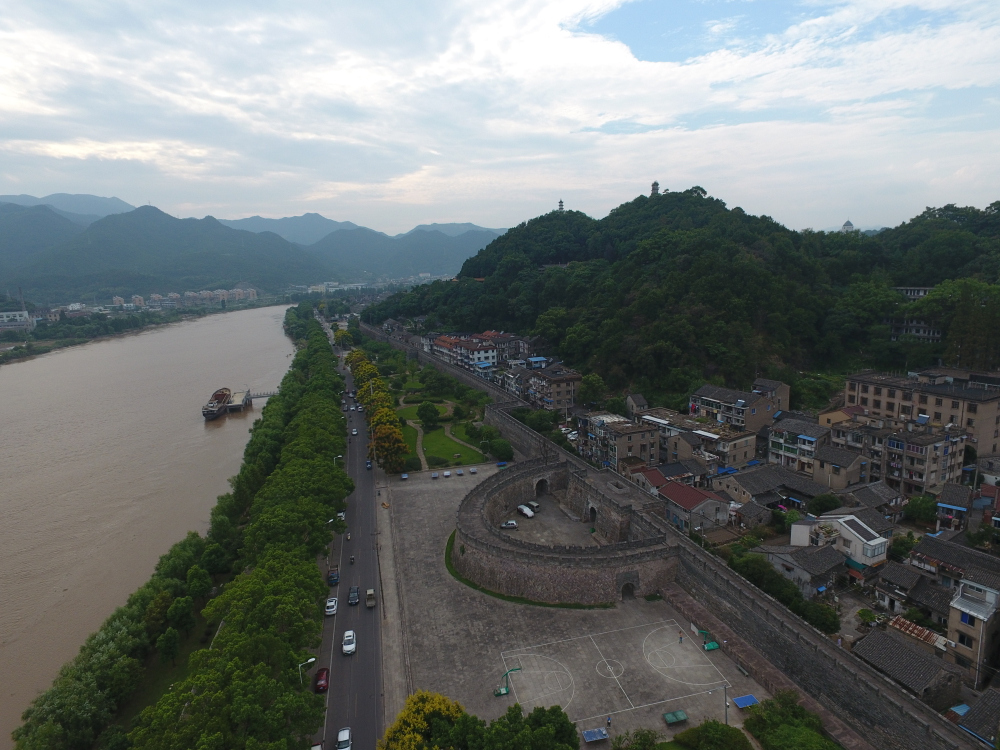
中国明清城墙的设计与建设水平,体现了人类追求人工构造与自然禀赋相和谐的探索精神。南京城墙属于明代都城城墙;西安城墙属于明代二级王城城墙;荆州、襄阳与台州临海均为明代府城城墙,寿县城墙属于明代“州”级规格的城墙;兴城城墙是中国仅存的明代卫城城墙;凤阳城墙是属于明代最初的皇城城墙。
列入清单的8座“中国明清城墙”,是人类不同时期、不同地域城市文明多样性的稀见案例。同时,它们得以保存至今,还是人类传统城市文明与现代城市文明能够有机融汇、传承发展、和谐共生的典范。
江南水乡古镇
所在省份:江苏省、浙江省
江南水乡古镇地处长江中下游平原,在江南地区经济和文化鼎盛时期(公元13世纪~16世纪)发展而成。它是在相同的自然环境条件和同一文化背景下,通过密切的经济活动所形成的一种介于乡村和城市之间的人类聚居景观,具有相仿的规划方式、建筑风格、社会职能和文化传统。
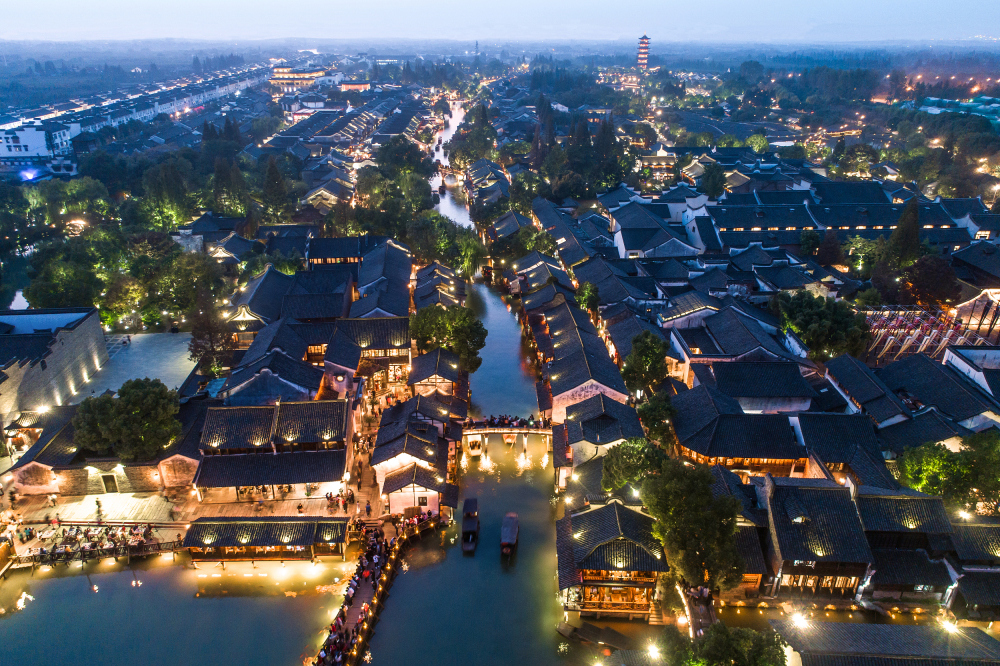
其一,以“小桥、流水、人家”为特色的空间布局。江南水乡古镇均是外湖环列、内河交叉、临水成街、因水成路、依水筑屋,水、路、桥、屋相融合的空间构造。
其二,以“粉墙黛瓦、廊街岸柳、深巷老宅”为特色的建筑风格。建筑在单体上以砖木结构的一、二层厅堂式为主,构造上青瓦覆顶、木椽承檩、空斗填墙、片石铺地,屋内木构部分精雕刻而不施彩绘,形成色调雅素明净的建筑风格。
其三,以“业商贾、咏诗书、尚民俗”为特色的文化传统。江南水乡古镇以水兴镇、以水成市、以水得利,商品经济繁荣,加之优美的自然环境,成为官宦退隐、富贾置产、文人雅居之所,从而造就了古镇人文荟萃、群贤毕至的文化胜景。
(本文图片:CFP 提供)
Zhejiang Looks Forward to More Heritage Inscriptions
After the inscription of Archaeological ruins of Liangzhu City on the World Heritage List, other possible heritage candidates in Zhejiang are attracting attention. A province of history of culture, Zhejiang does have more candidates. People wonder which will be the next to be inscribed on the honor list.
Let’s take a look at these possible candidates.
To become a candidate for consideration, a candidate must be put on a preliminary list in the host country first. Without this qualification, the candidate will not be admitted even for consideration by the UNESCO. Then a preliminary is updated every ten years, that is, a candidate must stay on that list for a long time. China’s preliminary list was last updated on January 30, 2019. It has 62 candidates and Zhejiang is associated with six.
In 2006, the China National Heritage Administration set up its own preliminary list on its own terms. It is actually a dynamic shortlist. Those with a distinct outstanding universal value and under better preservation have a chance to be shortlisted.
Seawalls and Tidal Bores Cultural Landscape of Haining
The proposed property is a 11,052.3-hectare zone in the south of Haining City, Zhejiang. It is composed of a 32-km-long seawall system in the Haining section of the Qiantang River and the seawall administration facilities, Historical Sites of Qiantang River Tidal Bore and Tidal-Bore related history and culture, and historical sites of Emperor Qianlong’s Southern Inspection Tours, and fifteen heritage elements.
The core of the proposed heritage zone includes the Haining seawall system, which started in the Tang Dynasty and still stands against the tidal hazards on the northern bank of the Qiantang River, and the Qiantang River Tidal Bore. The seawall system, which is a defense-in-depth structure, is a direct testimony to local people’s endeavor to defend their homeland from sea encroachment. Qiantang River Tidal Bore gave rise to the cultural landscape, touching off a series of tidal-bore related customs and rituals as well as poetry and art related to the tidal bore. The tidal-bore related historical and cultural complex highlights the local folk faith, sacrificial ceremonies in honor of the deity of tidal waves. These landscape elements support the outstanding universal value of the candidacy. The property is a complete structure, keeps its historical authenticity, and presents a representative value of the cultural landscape. The seawall system is a perfect example of well-preserved, still-in-use, and working defense against tidal waves.
Celadon Kiln Sites
Celadon of Zhejiang is a paragon of the manual porcelain manufacturing industry in ancient China. Zhejiang is one of the cradles of porcelain making. The long history and the extensive existence of sites constitute a unique testimony to the porcelain making technology invented in China and carried on through history up to today.
The heritage elements of the supposed site zone include kilns sites and relevant historical environment. The kiln sites refer to manmade relics at the celadon making work sites such as workshops, kilns, wasted porcelain landfills, celadon making tools. The historical environment refers to soil resource zones, firewood resource zones, kiln locations, water supply resources, and transportation watercourses.
Celadon of Zhejiang is represented by Shanglinhu Yue Kiln and Dayao Longquan Kiln. Shanglinhu Yue Kiln features the best of Chinese celadon from the 8th century to the 10th century. The celadon produced there showcases distinct characteristics and was highly influential in China. The nonstop production lasted there for the longest time in Chinese history. Moreover, it influenced porcelain making in Egypt and Persia and Korean Peninsula from 9th century to the 11th century.
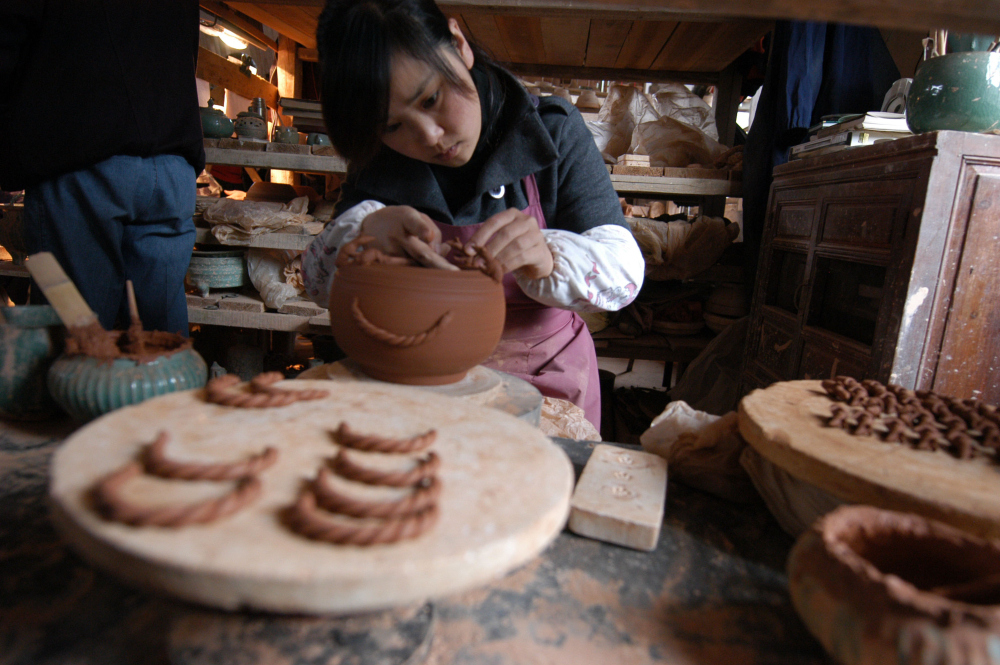
Dayao Longquan Kiln represented the celadon-making industry in Longquan. It started making celadon during the Five Dynasties (707-960) and flourished in the Northern Song Dynasty (960-1127) and climaxed in centuries from the Southern Song (1127-1279) to the middle phase of the Ming (1368-1644). It was China’s capital of porcelain making of that time. The Longquan Kiln represents the mainstream technology and unique art of Chinese celadon from the 10th to the 13th century. Longquan celadon was influential in both China and overseas.
Wooden Covered Bridges
of Fujian and Zhejiang
It is a joint venture of Fujian and Zhejiang. Of more than 100 covered bridges in the northeast of Fujian and the south of Zhejiang, 22 wooden covered arch bridges are on the preliminary list, 10 in Zhejiang and 12 in Fujian. These bridges represent a unique technological solution to the problem of building a long wood bridge without any piers. These bridges are all located in mountains of thick woods, steep gullies, and torrential streams. With simple building materials and tools, ancient craftsmen solved problems such as deep gullies, big spans, flood prevention and construction. The building techniques bespeak a profound understanding of nature and environment and smart use of natural resources.
These bridges are also important public spaces in mountain villages and play a central role in everyday life there. People meet there to practice their faith and for social purposes. Many bridges also serve as a marketplace. Such a space enhances emotional communication and cultural identification.
City Walls of the Ming and the Qing
It is a joint venture of eight provinces. Zhejiang is one of the eight. The city walls on the preliminary list represent the typical city walls in both north and south, and feature different city wall systems of the two dynasties from the 14th century up to the early 20th century. Among the eight types are the city wall of a national capital, a second-tier imperial city, prefecture capitals, and a citadel. The urban heritage system bespeaks distinct characteristics and an inner structural logic of building city walls of ancient Chinese cities. The city walls in this joint venture, built in different times and different places, constitute a rare case of diverse regional city cultures. The preserved existences of these city walls are an exemplary model of the organic fusion of traditional urbanism and modern-time urbanism.
River Towns of Jiangnan
These towns in Jiangnan (the south of the Yangtze River Delta) took shape from the 13th century to the 16th century where economy and culture flourished. They represent a rural-urban hybrid of human settlement landscapes, born out of closely knitted economic activities. They share similar urban planning, architectural style, social functions and cultural tradition.
These towns are all crisscrossed by rivers and surrounded by rivers or lakes. The spatial structure is composed of rivers, houses, streets and bridges. Architecturally, these towns have blocks of one- or two-storied houses, which are usually of a brick and wood structure. Architectural features are similar to each other. They also present a traditional lifestyle. Most people were engaged in trade and business, they read books, and sought future development through education locally available, they respected and abided by local customs. In ancient times, all these towns were market towns where market economy thrived and became home to business tycoons and retired government officials and cultural celebrities. These people added a special touch to the history and culture of these river towns.
